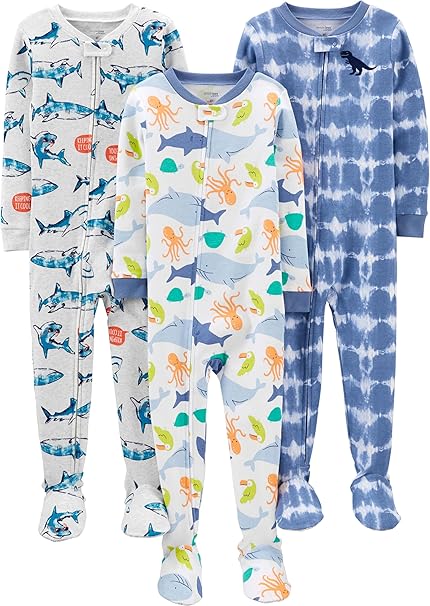When Can a Baby Sleep with a Blanket? An Expert-Backed Guide for Parents
It’s one of the most common questions we hear from new parents. You want your baby to be warm and cozy, but you’ve also heard the safety warnings. We’re here to provide clear, simple, and authoritative answers based on expert recommendations.
As parents and safety-conscious product reviewers at Blanket Insider, we know that the question “when can my baby sleep with a blanket?” comes from a place of love. You see your little one in their crib and have a natural instinct to tuck them in. However, this is one area of parenting where expert guidance is crucial for your baby’s safety.
The primary concern is the risk of suffocation, entrapment, and Sudden Infant Death Syndrome (SIDS) associated with loose bedding in a crib. This guide is built around the safe sleep guidelines from the American Academy of Pediatrics (AAP) to help you make informed decisions and keep your baby safe and comfortable.
THE SHORT ANSWER:
After 12 Months OldThe AAP recommends waiting until your baby is at least 12 months old before introducing any soft bedding, including a lightweight blanket, into the crib.
The “Why”: Understanding the AAP Safe Sleep Guidelines
The ABCs of Safe Sleep
The AAP’s recommendations are the gold standard for infant safety. Their core message is the ABCs of Safe Sleep:
- A – Alone: Your baby should sleep alone in their own designated sleep space.
- B – on their Back: Always place your baby on their back for every sleep, including naps.
- C – in a Crib: Use a crib, bassinet, or play yard that meets current safety standards, with a firm, flat mattress and a fitted sheet. Nothing else.
This means no blankets, pillows, crib bumpers, or soft toys in the sleep area for the entire first year of life.
Age-by-Age Breakdown: A Timeline for Blanket Introduction
A baby’s ability to sleep safely with a blanket is tied to their developmental milestones, not just their age. Here’s what to expect at each stage.
Newborn to 12 Months: The No-Blanket Zone
During this high-risk period, the crib should be completely bare except for a fitted sheet. Your baby does not yet have the motor skills or strength to move a blanket away from their face if they get tangled. Safer alternatives are the only option for warmth.
12 to 18 Months: The Cautious Introduction
After their first birthday, the risk of SIDS decreases significantly. If you choose to introduce a blanket, it must be small, lightweight, and breathable. At this stage, your toddler should be able to sit, stand, and roll confidently, giving them the ability to move the blanket if needed. Start with naptime so you can supervise.
18+ Months: A Safer Transition
By this age, most toddlers can handle a blanket without issue. You can introduce a slightly larger toddler blanket or a lightweight quilt. This is also the age when a small, firm toddler pillow can be considered.
Checklist for a Toddler’s First Blanket
When you’re ready to make the transition after 12 months, not just any blanket will do. Use this checklist to ensure you’re choosing a safe option.
-
🌬️
Lightweight & Breathable: Choose materials like thin cotton or muslin. Hold it up to a fan; if air passes through easily, it’s a good choice.
-
📏
Toddler-Sized: Avoid large, adult-sized blankets that can easily overwhelm a small child. Look for blankets specifically labeled for toddlers (often around 30″x40″).
-
🧵
No Embellishments: Ensure the blanket has no ribbons, tassels, buttons, or loose threads that could pose a choking or entanglement hazard.
-
🧼
Easily Washable: Choose a durable blanket that can withstand frequent washing without falling apart. For reviews of top options, see our guide to the best baby blankets.
-
⚠️
Avoid Dangerous Types: Never use weighted or heated blankets for infants or toddlers unless specifically prescribed and supervised by a medical professional. Proper care is also key; learn how to wash a weighted blanket or a heated blanket to understand their special requirements.
Safer, Cozier Alternatives We Recommend
For the first year, keeping your baby warm is all about wearable bedding. These are the safest and most effective ways to ensure your little one is comfortable without the risks of a loose blanket.

HALO SleepSack Wearable Blanket
The gold standard in wearable blankets. This “sleeping bag” for babies keeps them warm without covering their face. The zipper makes nighttime changes easy.
Check Price on Amazon
Carter’s Footed Pajamas
A simple and effective solution. Footed PJs are a one-piece outfit that keeps baby’s entire body, including their feet, warm all night long.
Check Price on Amazon
aden + anais Muslin Swaddles
For newborns (0-3 months) before they roll, a proper swaddle provides warmth and security. These are also great as a multi-use lightweight blanket for *toddlers*. See our guide to the best swaddle blankets.
Check Price on Amazon| Age Range | Blanket in Crib? | Safer Alternative |
|---|---|---|
| 0-12 Months | No (High Risk) | Sleep Sacks, Swaddles, Layered PJs |
| 12-18 Months | Maybe (Use Caution) | Small, lightweight, breathable blanket |
| 18+ Months | Yes (Low Risk) | Toddler-sized blanket and pillow |
The Final Word: Trust the Guidelines & Your Instincts
While the 12-month mark is the official guideline, every child is different. Trust the expert recommendations, prioritize safety above all else, and use safer alternatives like sleep sacks for as long as you feel comfortable. There is no rush to introduce a blanket.
As your family grows, your blanket needs will evolve. From the first swaddle to a cozy throw on your blanket ladder and the perfect blanket for the beach, each serves a purpose. By building a foundation of safety first, you can ensure comfort and peace of mind for years to come.

